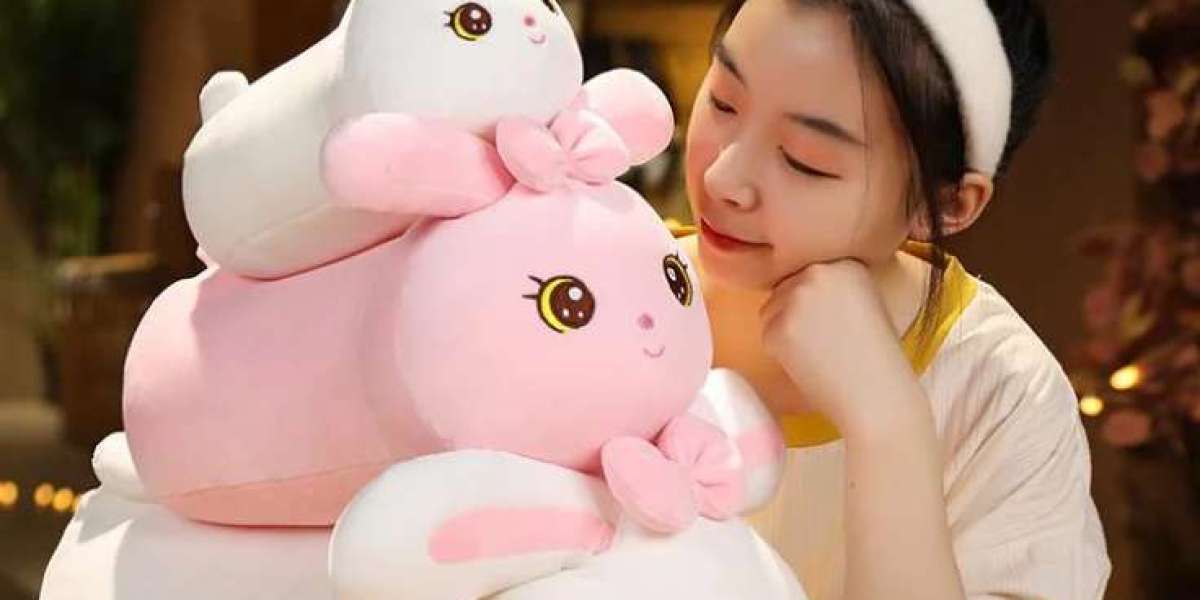Stuffed animals are more than just toys—they're beloved companions for children, cozy decorations in bedrooms, and even keepsakes for adults. But like anything that's hugged, dragged, and slept with, they collect dirt, allergens, and germs over time. Knowing how to wash stuffed animals properly ensures they stay clean, fresh, and safe.
In this comprehensive guide, we’ll break down the best methods for cleaning soft toys based on their material, construction, and age. Whether you’re dealing with a delicate heirloom or a machine-washable plushie, you’ll find the safest and most effective approach here.
When Should You Wash Stuffed Animals?
Soft toys can trap bacteria,how to wash stuffed animals dust mites, and allergens—especially if your child has allergies, asthma, or sensitive skin. You should consider washing a stuffed animal when:
It looks visibly dirty or stained
Your child has been sick
It has been in contact with food or outdoor surfaces
You’re cleaning your child’s bedding and toys regularly
Tip: For frequently handled toys, a monthly clean is ideal. Less-used toys can be cleaned every few months or as needed.
Step 1: Check the Label
Before diving into cleaning soft toys, always read the care label. It tells you if the toy is:
Machine washable
Hand wash only
Surface clean only
Dry clean only
If the tag is missing, you can use some quick tips to judge the cleaning method:
If the toy is filled with foam beads or batteries, do not submerge it.
If it's sewn tightly with no electronics, it's likely safe for gentle machine or hand washing.
Method 1: How to Wash Stuffed Animals in the Washing Machine
Many newer stuffed animals are machine washable—but that doesn’t mean you should toss them in without care.
Steps for Machine Washing:
Place the stuffed animal in a mesh laundry bag or pillowcase
This prevents the fabric from tearing and keeps limbs from getting stretched.Use a gentle, fragrance-free detergent
Avoid strong chemicals, especially for babies or sensitive children.Set the machine to cold water and gentle cycle
Hot water can shrink fabric or melt glued-on features.Air dry or use a no-heat setting
High heat in dryers can deform stuffing or damage fur.
Method 2: Hand Washing Soft Toys
Hand washing is best for older, delicate, or non-machine-safe toys. It’s also ideal for plush toys with glued-on accessories or stitched details.
Steps for Hand Washing:
Fill a basin with lukewarm water and mild detergent
Mix until sudsy but not overly soapy.Gently submerge and scrub with a soft cloth or sponge
Focus on soiled areas, and avoid aggressive rubbing.Rinse thoroughly with clean water
Remove all soap to prevent skin irritation later.Squeeze out excess water gently
Avoid twisting or wringing.Lay flat to air dry on a towel
Sunlight can help disinfect, but avoid direct heat.
Method 3: Surface Cleaning (For Delicate or Battery-Operated Toys)
If the toy can’t be submerged—due to electronics, beads, or delicate materials—surface cleaning is the way to go.
Steps for Surface Cleaning:
Mix water with a few drops of baby shampoo or mild detergent
Dip a soft cloth in the solution and wring it out
Gently wipe the toy’s surface, focusing on stains
Use a clean, damp cloth to wipe off any residue
Air dry completely before returning it to a child’s bed or toy bin
Bonus: How to Sanitize Stuffed Animals
Especially during flu season or after illness, you may want to disinfect stuffed animals.
For machine-washable toys:
Add a cup of white vinegar to the rinse cycle. It’s natural, safe, and eliminates odors and germs.
For non-washable toys:
Use a disinfectant spray labeled safe for fabrics. Lightly mist and let air dry.
Drying Tips: What Not to Do
Avoid using high-heat settings or leaving toys in direct sunlight for long periods.
Best Drying Practices:
Air dry on a flat towel to maintain shape.
Fluff occasionally to prevent clumping.
Use a hairdryer on cool to speed up drying for surface-cleaned toys.
Quick Tips for Cleaning Soft Toys
Remove any removable outfits or accessories before cleaning.
Use a lint roller to remove surface dust and hair between washes.
Freeze the toy in a zip-lock bag overnight to kill dust mites (ideal for allergy-sensitive children).
Repair rips or loose stitching before washing to prevent damage.
When to Replace Stuffed Animals
Even the most cherished plush friends don’t last forever. If a toy is:
Losing stuffing
Constantly smells bad even after cleaning
Has safety issues (like loose eyes or seams)
…it may be time to retire it or replace it with a new version.
Conclusion: Clean, Cuddly, and Safe
Now you know exactly how to wash stuffed animals without causing damage or wear. From machine washing to surface cleaning, keeping soft toys fresh is easier than ever with a little care. Regular cleaning of soft toys helps maintain hygiene, prolongs the life of the toy, and keeps them looking and feeling their best.
Whether it’s your child’s bedtime buddy or a nostalgic gift, proper cleaning ensures these cherished companions remain safe, snuggly, and loved for years to come.

